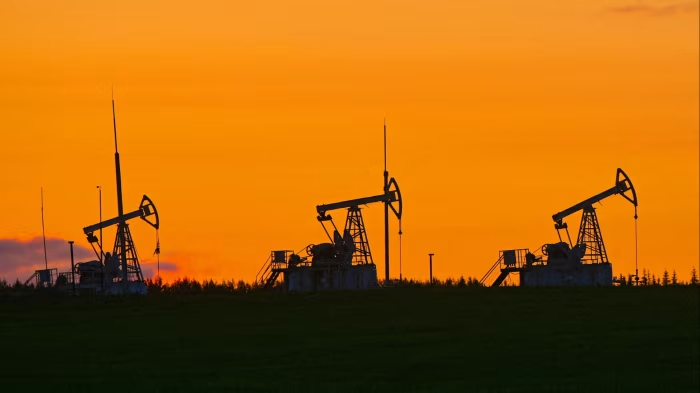The widest gap for more than two decades has opened up between the forecasts of the three main international organisations that track the world’s crude markets, causing confusion about global oil demand.
The Paris-based International Energy Agency (IEA), the Opec group of oil producers and the US Energy Information Administration (EIA) all reported their monthly oil statistics this week. The divergence between their forecasts for oil demand in 2026 reached 1.8mn barrels of oil a day (b/d), the equivalent of France’s oil consumption and the biggest gap since 2002.
The gap has gradually widened over the past two years, raising questions about the trajectory of the world’s oil demand as countries transition to clean energy.
The oil market has been caught this year between fears of a supply crunch — stoked by US sanctions on two of Russia’s largest oil companies in October — and warnings of a longer-term glut driven by rising US shale output and an economic slowdown.
Brent crude touched $82.63 a barrel in January before resuming its downward trend, then spiked again in June after tensions flared in the Middle East. The benchmark was trading at about $64 a barrel on Friday.
The IEA is the most bearish about demand in 2026, putting it at 104.7mn b/d. Opec is the most bullish, with a forecast of 106.5mn b/d. The EIA is between the two, at 105.2mn b/d.
Traders had been puzzled by the divergence, said Tamas Varga, an analyst at PVM, an oil broker. “These quite significant differences in views caused confusion, in that traders just simply did not know who to believe, did not know which number is accurate,” he said.
He added that there had traditionally been a strong correlation between oil stock levels and prices, so if the forecasts of stock levels diverged, “you can’t really figure out what the price could be in the future”.
There are multiple possible causes for the differences in the forecasts, including a greater share of the world’s oil falling under sanctions, and a lack of visibility about how much oil is being put into strategic storage by China, amid an off-again, on-again trade war with the US.
One oil market observer, who asked not to be named, said that Iran, under US sanctions, might be trying to hide a share of its oil production, causing problems with the data, while Giovanni Staunovo, an analyst at UBS, said that since the first Trump administration, China had held back some data, concealing the true size of its stocks, making it harder “to have the full picture”.
Adding to the confusion, said Martijn Rats, an analyst at Morgan Stanley, there were now 1.13mn b/d of oil in the IEA’s model that were “unaccounted” for. These are barrels that have been produced, but do not appear to have been consumed or stored.
“Historically, nine out of 10 times when you have unaccounted oil, you see revisions to demand as more data comes out,” he said.
He noted, however, that the missing barrels had grown from 110,000 b/d in 2024 to nearly 2mn barrels in August before falling back. The IEA said the unaccounted barrels were the result of a time lag in the data, but Rats suggested that the numbers were now so large, they might be distorting the view of demand growth.
“There’s lots of conflicting data, it’s a fog, but the fog is telling you these numbers are not jiving and the underlying demand might be better than we thought,” he said.
He added that if demand growth was 200,000 b/d a year stronger than previously thought, it would have big implications for the sector.
“Then you are back to the historical trend and you are thinking very differently about the impact of the energy transition on growth. Maybe less is changing than you thought,” he said.
The IEA said that while it was confident of its forecasts, its demand figures may be subject to revision because the number of countries that regularly published data on oil supply and demand had fallen in recent years, “to the detriment of market transparency and stability”.
There was also an underlying political divide among the institutions, said David Wech, chief economist at Vortexa, an energy data company.
“There is, overall, a certain trend in terms of energy transition and related aspects of climate change . . . it’s highly likely that Opec is wanting to give a positive outlook on the market, while it is possible that the IEA is, perhaps deliberately or emotionally, more on the conservative side.”
